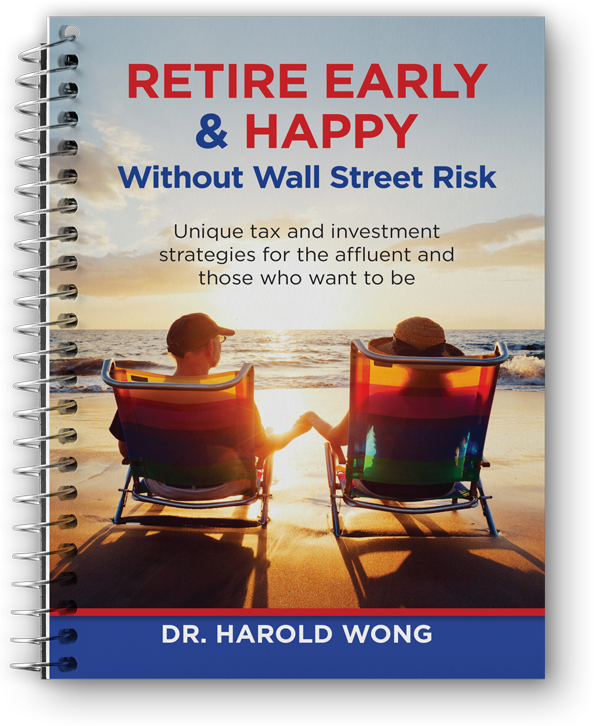

Works Written by Dr. Wong
Will You Have Financial Freedom In Retirement?
Ahwatukee Foothills News by Dr. Harold Wong
July 4, 1776 is when Congress, composed of delegates from America’s original 13 colonies, signed the Declaration of Independence, declaring the nation’s independence from Great Britain. Between 25,000 to 70,000 Americans died in the Revolutionary War, most from disease or in British prison ships held in appalling conditions.
Instead of just grilling meat and taking the day off from work, July 4, 2024 would be a great time to assess your retirement future. Financial freedom in retirement means being able to have enough money to cover all your basic living expenses, fun money, and hopefully bucket list money. Once you determine what your annual retirement spending level is, it’s a fairly simple mathematical equation to determine financial freedom.
Example: Your goal is to have $100,000/year in annual retirement income, pay $10,000 income tax, and have $90,000 available to spend. You are married with current job income of $150,000/year and you lose $11,475/year to Social Security and Medicare payroll taxes. If your federal taxable income is $120,000, you will owe $16,506 of federal income tax and about $3,000 of AZ income tax. Let’s round this total to $31,000 and that leaves $119,000 that can be spent or saved and invested. Assume that you are currently age 50 and you have saved $500,000 of financial assets.
Option 1: you want to retire at age 62 and save $10,000/year, which was the average savings rate before COVID hit in early 2020. Assume that your average rate of return is 6% after all Wall Street fees. Your annual $10,000 of savings will become $178,821 by age 62. Your $500,000 of current financial assets will become $1,006,098 by age 62. Now you have $1,184,920 by age 62 and you are now a millionaire. Does that mean you can have $90,000/year of spendable income in retirement? Not necessarily.
The average dividend yield for the S&P 500 companies, since January 1, 2020, has been 2%. Currently, you can earn 4.5% on a short-term bank CD, but Wells Fargo Bank does not even offer a 5-year CD because we have an interest rate inversion, meaning that short-term interest rates exceed long-term rates.
Let’s suppose your average dividend or interest earnings is 3% of $1,184,920 = $35,548 annual earnings at age 70. Add about $45,000 of Social Security income, and your total retirement income is $80,548 and you are about 20% short of your goal. The field of financial planning says that you can live in retirement on 20-35% less income than when you were working, but why would you want to work your whole life knowing that you will have a substantial cut in lifestyle when you retire?
Option 2: You decide to work until age 70 to maximize retirement savings and double your Social Security income. You save $20,000/year; reduce income tax $15,000/year; and your overall rate return is the same annual 6% until retirement. Your $500,000 at age 50 becomes $1,603,568 by age 70. Your annual $20,000/year savings becomes $779,854 by age 70. You save $15,000/year of income tax and that becomes $584,891 by age 70. Your total financial assets are now $2,968,313.
If you can average a 6% return in non-stock-market assets (to reduce risk of losing your life savings) your retirement income is $178,098. Add $90,000 of Social Security income (it’s double at age 70 compared to age 62) and your total retirement income at age 70 is $268,099, much more than the $80,548 in Option 1. You can afford all your bucket list items.
Conclusion: Increasing savings; working until 70; and using non-Wall Street assets to save income tax and maximize retirement income can make a huge difference!
To RSVP for the seminars or schedule a free consultation, please contact Dr. Harold Wong at (480) 706-0177 or
Dr. Wong earned his Ph.D. in Economics at University of California/Berkeley and has appeared on over 400 TV/radio programs.
Office Address
90 South Kyrene Rd
(Says Suite 1 on the front door)
Chandler, Arizona 85226
Click here to schedule a FREE Strategy Session
with Dr. Wong

